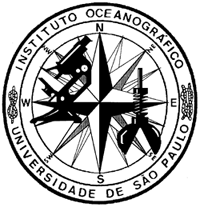Bentbic oxygen and nutrient ftuxes were measured in a section of the hypersaline carbonate-rich coastal lagoon of Araruama, SE-Brazil. In situ incubations of the sediment surface (Zm - 1.5) were performed at one station with light/dark chambers during september 1993 (early spring period) and april 1995 (earlyautumn period). The carbonate..rich aediments were covered by 1-3 mm thick microalgal mats, dominated by the cyanobaeteria Phormidium sp, Oscillatoria sp, and Lyngbya sp. Benthic net primary production rates were 15.4 ± 0.7 mmolC/m²/d in early spring and 33.8 ± 8.8 mmolC/m²/d in early autumn, total community respiration rates attained 35.3 ± 7.2 and 65.7 ± 16.9 mmolC/m²/d, and pelagic primary production rates 1.7 ± 0.7 and 4.0 ± 1.4 mmolC/m²/d, respectively. Total community metabolism was thus heterauophic and mainly driven by benthic metabolism. The benthic release rates af ammonia were 0.65 ± 0.32 mmolC/m²/day in early spring and 0.58± 0.42mmoVm ldaym early autumn, butwere near to negligible for orthophosphate. Pelagic primaryproduction was limited byphosphorous, in part, by the preferential release of étmmonia over orthophosphate from the sediment-water interface. The benthic primary production and nutrient release rates were within the range of other eury-to hypersaline carbonate-rich environments characterized by non- consolidated algat rats.
Primary production; Respiration; Nutrients; Benthic Interface; Hypersaline lagoon; Brazil
